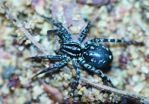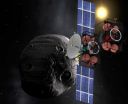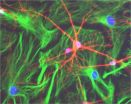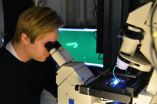(Press-News.org) (Edmonton) An overwhelming majority of Albertans believe dying adults should have the right to request to end their life, according to new research from the University of Alberta.
U of A researcher Donna Wilson led the team that studied the views of 1,203 Albertans on assisted suicide, currently illegal in Canada. A majority—77.4 per cent—felt dying adults should have the right to end their life early.
"Increasingly, there are countries or states where they are allowing assisted suicide or euthanasia. Like many of those countries, Canada will have to grapple with this question," said Wilson, a professor and Caritas Nurse Scientist in the Faculty of Nursing. "Until this point, nobody has asked the public, and that's a very important perspective."
Wilson, an expert in aging and end-of-life care, used data gathered in a 2010 health-care survey by the U of A's Population Research Laboratory. When asked, "Should dying adults be able to request and get help from others to end their life early?" a total of 36.8 per cent of respondents answered yes outright.
Another 40.6 per cent of respondents indicated yes, but with the qualification that assisted suicide "should only be allowed in certain cases or situations." The remaining 22.6 per cent answered no.
The results showing support, Wilson said, far exceeded her expectations and buck the province's reputation as a society holding traditional, conservative views.
"You have these preconceived images of Albertans, but Alberta is a very young province—the youngest in Canada—and we really value autonomy and independence," she said. "A lot of people realize that, 'If I were dying, I'd want to be able to say, look, end it now. I might not want it in the end, but it would be nice to have that option.'"
Personal experience factors into support
The survey data show personal experience helps shape opinions on assisted suicide. Individuals who have been involved in a decision to stop or not start life-supporting treatment were 79.8 per cent in support. Even greater support—81 per cent—was observed among those who have euthanized a pet.
"It's not just some abstract answer that 'this isn't right,'" Wilson said. "These are people with important experiences that made them much more open to assisted suicide."
Respondents who opposed assisted suicide were more likely to be less educated (39.8 per cent did not complete high school) and to have strong religious beliefs. Some 40 per cent of Protestants answered no, as did 35 per cent of Catholics and 44.3 per cent of those in the "other religions" category—a group that includes Christians, Muslims, Hindus and Jews.
Wilson's research, which was published in the March issue of Health and Social Care in the Community, comes at a time when the federal government is appealing the B.C. Supreme Court ruling to allow Gloria Taylor, who had late-stage ALS, a constitutional exemption to proceed with physician-assisted suicide. A Quebec panel has also called on that provincial government to allow "medical assistance to die."
Wilson said she is not calling for legal changes, but cautions that if laws are changed to allow assisted suicide, it will be paramount to learn from the experiences of other countries to satisfy concerns about safety, the impact on health professionals and fears of abuse of power.
"With 77 per cent of people saying it's OK to do it, it's not going to go away—Canada is going to keep talking about euthanasia," Wilson said, noting the number of deaths in Canada is expected to double over the next two or three decades, which could further influence support.
"The discussion is here, so now is really an important time to see what happens in other countries where they allow it. If we're going to do it, let's do it the best we can, and until then, don't go there and don't jump into this lightly."
###
Wilson's research was funded by the Canadian Institutes of Health Research. END
Majority of Albertans support assisted suicide: UAlberta study
2013-03-07
ELSE PRESS RELEASES FROM THIS DATE:
UTHealth researchers find industrial chemicals in food samples
2013-03-07
HOUSTON – (March 6, 2013) – Researchers at The University of Texas Health Science Center at Houston (UTHealth) have discovered phthalates, industrial chemicals, in common foods purchased in the United States. Phthalates can be found in a variety of products and food packaging material, child-care articles and medical devices.
"Although it's not completely understood how phthalates get into our food, packaging may be a contributor to the levels of the toxin in food," said lead investigator Arnold Schecter, M.D., M.P.H., professor of environmental health at The University ...
A new cryptic spider species from Africa
2013-03-07
The species from the genus Copa are very common spiders found in the leaf litter of various habitats. Being predominantly ground-living, they occur widely in savanna woodlands but also occasionally in forests, where they are well camouflaged. They usually share the litter microhabitats with several other species of the family Corinnidae. The spiders from this cryptic, ground-dwelling genus in the continental Afrotropical Region are revised in a study published in the open access journal Zookeys.
The number of continental species in the Afrotropical Region has been reduced ...
How to predict the progress of technology
2013-03-07
CAMBRIDGE, MA -- Researchers at MIT and the Santa Fe Institute have found that some widely used formulas for predicting how rapidly technology will advance — notably, Moore's Law and Wright's Law — offer superior approximations of the pace of technological progress. The new research is the first to directly compare the different approaches in a quantitative way, using an extensive database of past performance from many different industries.
Some of the results were surprising, says Jessika Trancik, an assistant professor of engineering systems at MIT. The findings could ...
Iowa State engineers developing ideas, technologies to save the Earth from asteroids
2013-03-07
AMES, Iowa – Bong Wie has heard the snickers.
You want to protect the Earth from asteroids? Where were you when the dinosaurs needed you? You want to be like Bruce Willis in that asteroid movie?
Wie has a serious reply: After five years of science and engineering work, Wie and his small team have a publication list of 40-plus technical papers, $600,000 of NASA research support and a proposal for a $500 million test launch of an asteroid intercept system. Plus, Wie has just been invited to show off his research as part of NASA's Technology Day on the Hill in Washington, ...
INRS overcomes a hurdle in the development of terahertz lasers
2013-03-07
This press release is available in French.
Dr. Roberto Morandotti and his team at the INRS Énergie Matériaux Télécommunications Research Centre have developed a device that is critical to the use of terahertz (THz) sources for a variety of applications. Their electromagnetic non-reciprocal isolator is the subject of a recent article in Nature Communications, showing just how important this new development is. Until now, no isolator existed that was effective in the THz region of the spectrum, a situation that held back the development of certain technologies. The new ...
Star-shaped glial cells act as the brain's 'motherboard'
2013-03-07
The transistors and wires that power our electronic devices need to be mounted on a base material known as a "motherboard." Our human brain is not so different — neurons, the cells that transmit electrical and chemical signals, are connected to one another through synapses, similar to transistors and wires, and they need a base material too.
But the cells serving that function in the brain may have other functions as well. PhD student Maurizio De Pittà of Tel Aviv University's Schools of Physics and Astronomy and Electrical Engineering says that astrocytes, the star-shaped ...
Ketchup turns somersaults
2013-03-07
This press release is available in German.
The unusual behavior of complex fluids is part of our daily life: cake dough climbs up the stirring bar, ketchup becomes liquid when you shake it. Also technology uses such phenomena: if we add a small amount of long-chained polymer molecules, a pipeline can transport more oil. The polymers reduce the flow resistance. But up to now the origin of these effects was unclear. The engineers had to rely on estimates and lengthy trials.
A team of physicists led by Professor Andreas Bausch, Chair of Cellular Biophysics at TUM now ...
Mayo Clinic aids discovery of first dystonia gene found in African-Americans
2013-03-07
JACKSONVILLE, Fla. — A pair of studies tells the tale of how a neuroscientist at Mayo Clinic in Florida helped to discover the first African-American family to have inherited the rare movement disorder dystonia, which causes repetitive muscle contractions and twisting, resulting in abnormal posture. The research may improve diagnosis of this neurological condition in a population not known to suffer from it.
In the first study, published in 2011 in the journal Parkinsonism and Related Disorders, Mayo Clinic's Zbigniew Wszolek, M.D., and a team of neuroscientists from ...
Federal figures miss most work-related amputations
2013-03-07
A new report from Michigan State University and the Michigan Department of Community Health raises significant concerns about the federal government's system for tracking work-related injuries.
Published in the Journal of Occupational and Environmental Medicine, the study found the number of amputations following jobsite accidents in Michigan was nearly two-and-a-half times higher than the official estimate from the U.S. Bureau of Labor Statistics.
Such inaccuracy is evidence that the bureau should change its system that relies solely on a sample of employers to report ...
Protein lost in tumors blocks normal cells from being reprogrammed into stem cells
2013-03-07
Researchers from the Icahn School of Medicine at Mount Sinai have discovered that a particular protein prevents normal cells from being reprogrammed into cells that resemble stem cells, providing new insight into how they may lose their plasticity during normal development. This finding has broad-reaching implications for how cells change during both normal and disease development. The data are published this week in Nature Communications.
In a previous study, Emily Bernstein, PhD, and her team at Mount Sinai studied the natural progression of melanoma using mouse and ...



